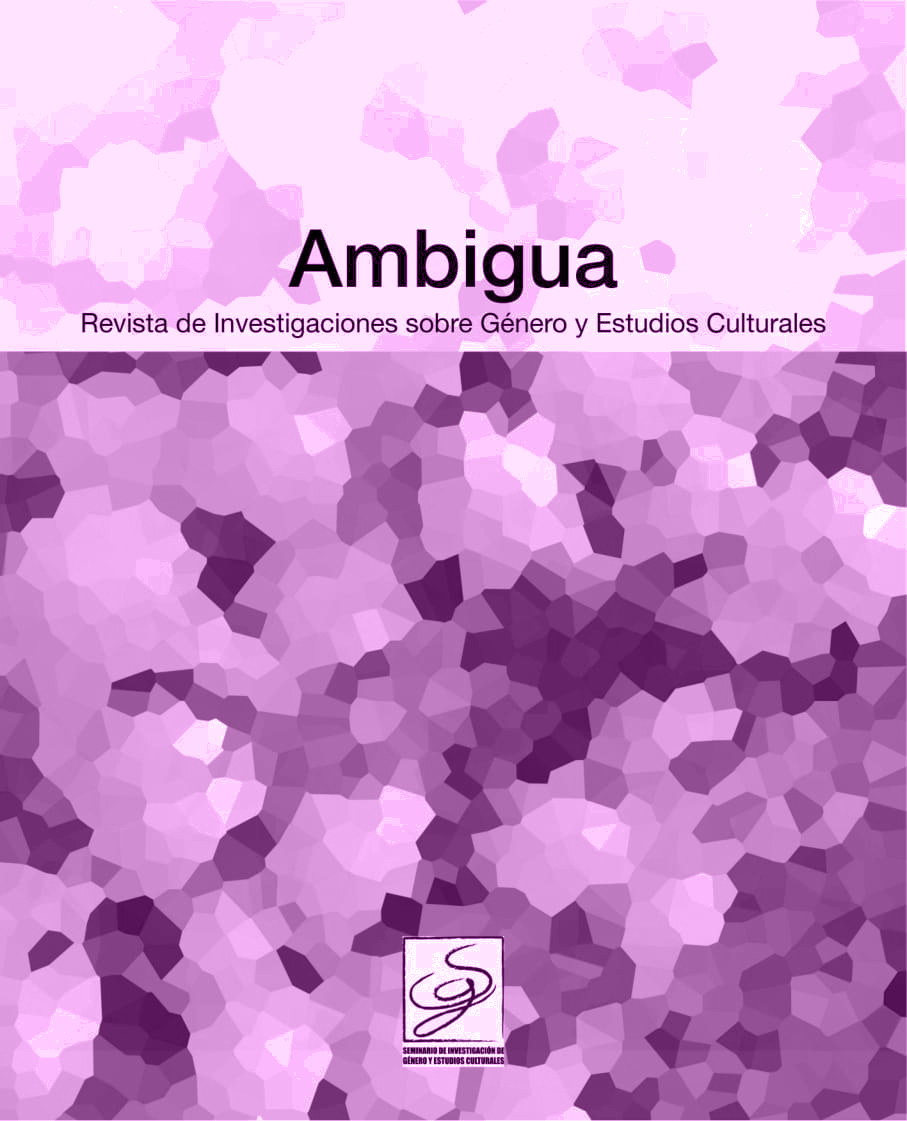Aesthetic narratives as a politics of resistance from the Honduran female experience
DOI:
https://doi.org/10.46661/ambigua.4984Keywords:
women, art, Honduras, femicides, gender identity, violence representationAbstract
Honduras is framed in a place of different kinds of violence that prevent the democratic progress of the country. The high rates of criminal violence are attributed to a problem among gangs that persists in a context of poverty and inequality. The resulting effect of this reductionist perspective approached by the State is the implantation of repressive measures towards society, instead of proposing preventive policies. Violences are hierarchized, giving them different values. In this sense, femicides are considered a minor problem. There is a lack of intention on the part of the institutions to solve these practices that favor impunity and affect the personal development of women. The aim is to examine the relationship between the particular Honduran context and the artistic representation of violence against women. The artists, from their condition, experience and reality, establish a political dialogue approached from the aesthetic language as a transforming and resistance act. What are the strategies and narratives used by Honduran artists to highlight violence? For its analysis, the methodology used was based on feminist epistemological approaches that allowed a reflective interpretation of the works proposed by the artists. The results obtained were the perpetuation of the patriarchal system that affects the artistic evolution developed by women. Likewise, the difficulty to make visible hidden reality of violence which remains subject to a pact of silence instigated by the culture of fear that the institutions protect.
Downloads
References
Base de datos de Estadísticas de homicidios internacionales de la Oficina de las Naciones Unidas contra la Droga y el Delito. Recuperado: https://datos.bancomundial.org/indicator/VC.IHR.PSRC.P5?end=2017&start=1990&view=chart
Boletín Muerte Violenta de Mujeres y Femicidios Enero-Diciembre 2018 (ONV/UNAHIUDPAS).Recuperado:https://iudpas.unah.edu.hn/observatorio-de-la-violencia/boletines-del-observatorio-2/unidad-de-género
Boletín Nacional Enero- Diciembre 2018 – Ed Nº52 Observatorio de la Violencia de la Universidad Nacional Autónoma de Honduras (UNAH) Recuperado dehttps://iudpas.unah.edu.hn/observatorio-de-la-violencia/boletines-del-observatorio-2/boletines-nacionales
CASTELLANOS, Julieta. “Honduras: violencia y procesos políticos”. En Democracia, elecciones y violencia en América Latina.Romeo, Salvador (ed.),79-99. Honduras: Instituto Universitario en Democracia, Paz y Seguridad (IUDPAS), 2017.
CHINCHILLA, Laura. “Cartografías Paranoicas.Espacio y violencia en la producción cultural hondureña reciente”. Centroamericana 27.2 (2017): 7-28.
Código Penal Honduras. Recuperado: http://www.poderjudicial.gob.hn/CEDIJ/Leyes/Documents/CodigoPenal-ReformaIncluida.pdf
DE SOLZIREÉ, Luz. De la posmodernidad y las artes visuales en Honduras a través de las bienales. Arte y cultura. 2.1 (2016): 14-23.
DOBINGER, Josefina. Recordar para volver al corazón. El cuerpo territorio de sentido y resistencia. Tegucigalpa: MUA, 2017.
DUQUE, Félix. Arte público y espacio político. Akal, 2001.
Gabriel, Galeano. “Rumbo 5 y sus relaciones contextuales”. Arte y cultura. 2.1 (2016): 4-13.
El Banco Mundial en Honduras. Tasas de pobreza. Recuperado: https://www.bancomundial.org/es/country/honduras/overview
GLOBAL WITNESS.“Honduras: El país más peligroso del mundo para el activismo ambiental”, 2017.
GOLD, Janet. Culture and Customs of Honduras. London: GreenWood Press, 2009.
LAGARDE, Marcela. Los cautiverios de las mujeres: madresposas, monjas, putas, presas y locas. México: Universidad Autónoma de México, 2006.
LANZA,Carlos & CABALLERO,Ramón (eds.). Contrapunto de la forma. Ensayos críticos sobre arte hondureño y centroamericano. Honduras: Cultura, 2017.
LARACH, Gustavo. “Tendencias del arte contemporáneo en honduras: tres estudios de caso”.
DOBINGER, Josefina. “Realidad visible e invisible: fosas colectivas del olvido recordadas en la memoria del cuerpo”. Innovare, 2 (2018): 68-87.
Observatorio de Igualdad de Género de América Latina y el Caribe Recuperado: https://oig.cepal.org/es/indicadores/feminicidio
ORTEGA, Visitación. “EL artivismo como acción estratégica de nuevas narrativas artístico-políticas”. Calle 14: revista de investigación en el campo del arte, 10(2015):100-111.
OYUELA, Leticia. Mujer Familia y Sociedad. Honduras: Guaymuras, 2001.
QUILES, Fernando & Quiñone, Ana Cielo et al (eds.). “Como Bálsamo de Fierabrás. Cultura en tiempos y territorios en conflicto”. Cuadernos del Aula, 4 (2018).
QUIÑONES, Emilia. “La violencia de género en el arte de la generación Mesótica II”. C I E H L, 23 (2016): 157-168.
Downloads
Published
How to Cite
Issue
Section
License
Copyright (c) 2020 Silvia Gas

This work is licensed under a Creative Commons Attribution-NonCommercial-ShareAlike 4.0 International License.
The authors agree with the following:
1. Authors retain copyright and grant the journal right of first publication with the work simultaneously licensed under a license Attribution-NonCommercial-ShareAlike 4.0 International (CC BY-NC-SA 4.0) that allows others to share the work with an acknowledgement of the work's authorship and initial publication in this journal.
2. Authors are able to enter into separate, additional contractual arrangements for the non-exclusive distribution of the journal's published version of the work (e.g., post it to an institutional repository or publish it in a book), with an acknowledgement of its initial publication in this journal.
3. Authors are permitted and encouraged to post their work online (e.g., in institutional repositories or on their website) prior to and during the submission process, as it can lead to productive exchanges, as well as earlier and greater citation of published work (See The Effect of Open Access).









